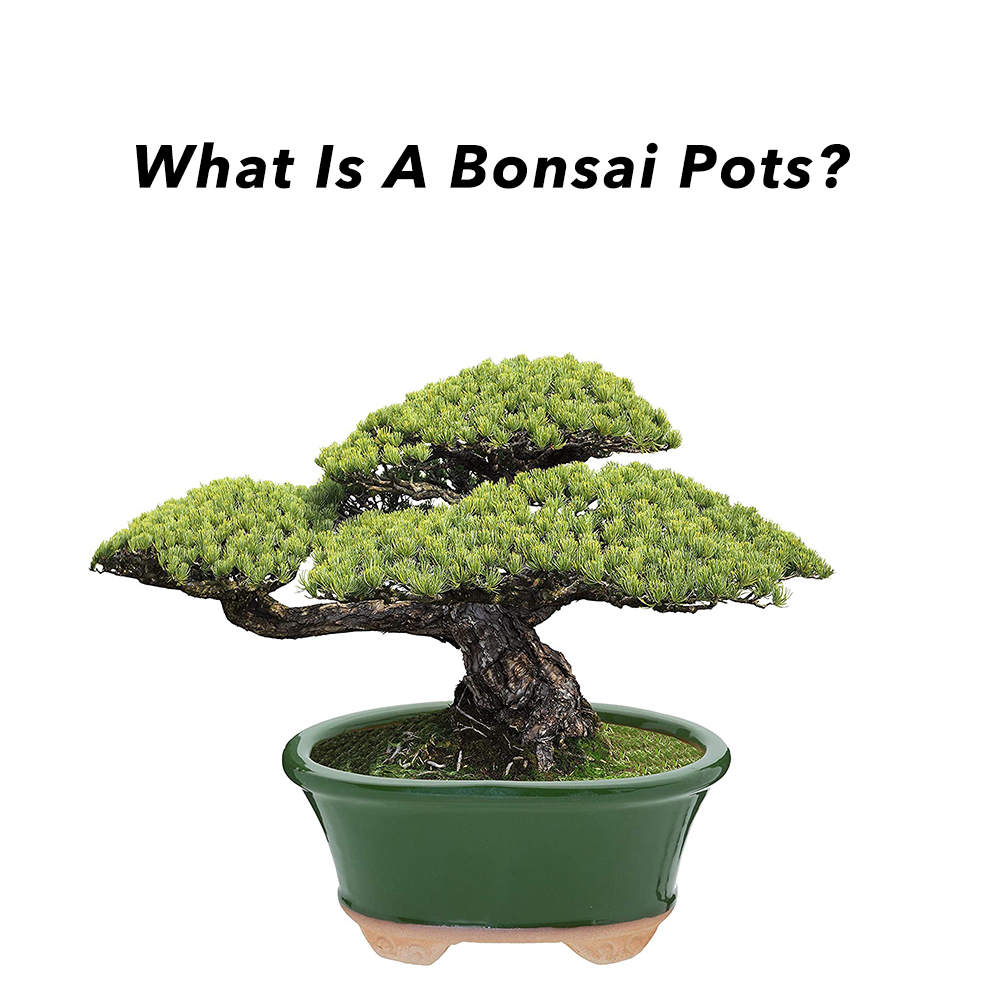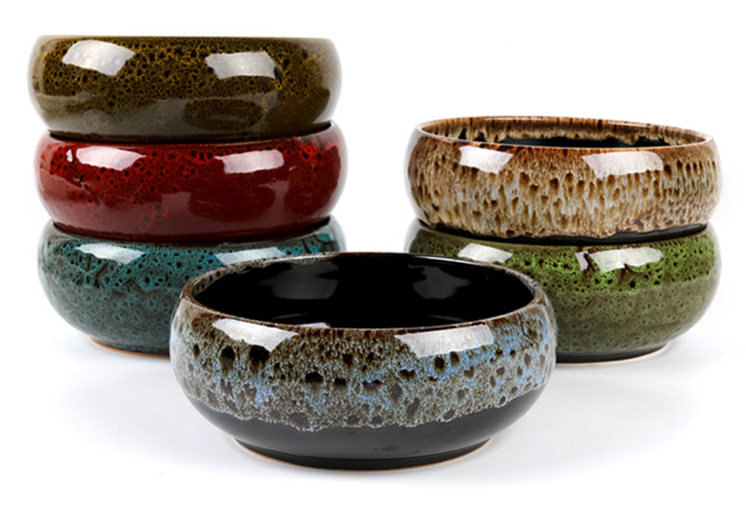What Is A Bonsai Planter Pots?
Time of issue: 2024-04-08 15:36:11
Introduce
For centuries, the art of bonsai has captivated and inspired individuals around the world with its beauty, elegance, and profound symbolism. Central to the cultivation of bonsai trees is the bonsai planter pot—a vessel meticulously crafted to enhance the natural beauty and harmony of these miniature masterpieces. In this comprehensive guide, we'll delve deep into the world of bonsai planter pots, exploring their history, design, craftsmanship, and cultural significance.
The Origins and Evolution Of Bonsai Pot
According to BIRMINGHAMBOTANICALGARDENS. While the word bonsai is of Japanese origin, the concept of this art form actually took root in China.
Since the Yin and Zhou dynasties nearly 3,000 years ago, people in China have cultivated ornamental plants to imitate natural scenery within gardens – a craft known as penjing.
Stemming from the ancient Chinese philosophy of wuxing, the cultivation of miniature, natural replicas was deemed a means of accessing the magical properties held within the replicated subject.
Writing on penjing, Wu-Zhong Zhou and Xiao-Bai Xu outline that many experts in China believe the first rudimentary display of this art form can be found in the archaeological remains of a 2000 year-old Han dynasty tomb – evident in the portrayal of potted flowers appearing in a mural discovered there.
Not too dissimilar are the paintings located in Crown Prince Zhang Huai’s tomb which date back to 706 AD; these artworks exhibit small plants in shallow dishes and are widely considered to be the first artistic impression of penjing.
At what point penjing or bonsai entered Japan is not known exactly. Some associate it with the spread of Buddhism from China to nearby countries which saw the introduction of tea plants and orange trees to Japan.
However, the art of aesthetically reducing plant sizes is more commonly thought to have entered Japanese culture as religious souvenirs, during the country’s Kamakura period. Evidence for when this occurred is implied in the earliest portrayals of bonsai which date back to the 11th century.
What Is Materials used for Bonsai planter pots?
In the intricate world of bonsai cultivation, every element plays a vital role in nurturing the miniature trees to their full potential. Among these elements, the material used for bonsai planter pots holds particular significance, influencing both the aesthetics and functionality of these essential vessels.
1. Clay and Earthenware

Clay and earthenware are among the oldest and most traditional materials used in crafting bonsai planter pots. Known for their natural appearance and rustic charm, clay pots have a timeless appeal that complements the organic beauty of bonsai trees. Clay pots are typically unglazed, allowing the natural texture and color of the clay to shine through. They offer excellent breathability, promoting airflow to the roots and helping to regulate soil moisture levels. Additionally, clay pots develop a unique patina over time, adding character and depth to the bonsai composition.
2. Ceramic
Ceramic bonsai planter pots are prized for their versatility, durability, and aesthetic appeal. Crafted from fired clay, ceramic pots come in a wide range of colors, shapes, and textures, allowing for endless creativity and expression. Glazed ceramic pots offer a glossy finish and vibrant colors, while unglazed ceramic pots have a more natural, earthy appearance. Ceramic pots provide excellent insulation, protecting the roots from temperature fluctuations and helping to maintain stable growing conditions. They are also easy to clean and maintain, making them a popular choice among bonsai enthusiasts.
3. Porcelain
Porcelain bonsai planter pots are prized for their elegance, refinement, and delicate beauty. Made from a fine clay body fired at high temperatures, porcelain pots are lightweight yet durable, with a smooth, non-porous surface. Porcelain pots often feature intricate designs, delicate patterns, and subtle glazes, adding a touch of sophistication to any bonsai composition. While porcelain pots may be more fragile than other materials, they offer unparalleled beauty and aesthetic appeal, making them prized collector's items among bonsai enthusiasts.
4. Plastic
Plastic bonsai planter pots are valued for their affordability, lightweight construction, and ease of use. Made from durable plastic materials such as polyethylene or polypropylene, plastic pots are resistant to breakage, fading, and cracking, making them ideal for outdoor use. Plastic pots come in a variety of colors and styles, offering versatility and flexibility in design. While plastic pots may lack the natural beauty of clay or ceramic, they are practical, functional, and accessible options for beginner bonsai enthusiasts or those on a budget.
How To Choose a Bonsai Tree Pot?
In the captivating world of bonsai cultivation, choosing the right pot for your miniature masterpiece is a decision that can greatly influence the overall aesthetic and health of your bonsai tree. From considerations of style and size to practical aspects like depth and drainage, there are several factors to keep in mind when selecting a bonsai tree pot.
1. Masculine vs. Feminine Aesthetics
One of the first considerations when choosing a bonsai tree pot is the aesthetic style that best complements the tree's characteristics. Traditional bonsai aesthetics often classify pots into masculine and feminine styles, based on their shape, color, and texture.
Masculine pots are characterized by straight lines, sharp angles, and earthy colors. They convey strength, stability, and ruggedness, making them suitable for trees with strong, upright trunk lines and powerful root structures.
Feminine pots, on the other hand, feature curved lines, soft contours, and delicate colors. They evoke a sense of grace, elegance, and femininity, making them ideal for trees with delicate foliage, slender trunks, and refined branching patterns.
Choosing a pot that aligns with the overall aesthetic of your bonsai tree can enhance its visual appeal and create a harmonious composition that delights the eye.
2. Size Matters
The size of the pot is another crucial consideration when choosing a bonsai tree pot. A pot that is too small may restrict root growth and limit the tree's development, while a pot that is too large may overwhelm the tree's proportions and disrupt its balance.
Ideally, the pot should be proportionate to the size of the tree, with the diameter of the pot roughly equal to the diameter of the tree's trunk at its base. Additionally, the height of the pot should be approximately two-thirds the height of the tree, allowing for proper root development and stability.
Selecting the right size pot ensures that your bonsai tree has adequate space for root growth, stability, and balance, promoting healthy growth and vitality.
3. Depth for Root Health
The depth of the pot is another important consideration that directly impacts the health and development of the bonsai tree's root system. Bonsai planter pots come in various depths, ranging from shallow to deep, each suited to different types of trees and stages of development.
Shallow pots are typically used for trees with shallow root systems, such as cascading or semi-cascade styles. They promote surface root growth and are well-suited for trees that prefer drier soil conditions.
Deep pots, on the other hand, are used for trees with deep root systems, such as upright or informal upright styles. They provide ample space for root development and allow for greater water retention, ideal for trees that require more moisture.
Choosing a pot with the appropriate depth ensures that your bonsai tree's roots have sufficient room to spread and grow, supporting its overall health and vigor.
4. Drainage Holes for Water Management
Proper drainage is essential for the health and vitality of your bonsai tree, and selecting a pot with adequate drainage holes is crucial to prevent waterlogged soil and root rot.
Ensure that the pot has multiple drainage holes in the bottom to allow excess water to escape freely. Additionally, consider using a pot with a mesh screen or drainage mesh over the holes to prevent soil from washing out while still allowing water to drain.
Good drainage promotes oxygenation of the roots, prevents waterlogged soil, and reduces the risk of root rot, ensuring that your bonsai tree thrives in its new home.
Conclusion
In conclusion, bonsai planter pots are much more than just containers for bonsai trees—they are vessels of artistry, craftsmanship, and cultural significance. Through their design, aesthetics, and craftsmanship, bonsai planter pots enhance the natural beauty and harmony of bonsai compositions, serving as symbols of reverence for nature and the enduring spirit of bonsai culture. Whether passed down through generations or crafted by master potters, bonsai pots are timeless works of art that continue to inspire and enchant bonsai enthusiasts around the world.
RECENT POSTS
- The Benefits of Wholesale High-Quality Ceramic Products for Retailers
2025-12-17
- Can You Make an Ashtray with Air Dry Clay? Pros, Cons, and Safer Alternatives
2025-12-17
- The Impact of Ceramic Materials in Energy-Efficient Buildings: Benefits and Applications
2025-12-04
- Top 7 Ceramic Cookware Health Benefits: Why It’s a Safer Choice for Your Kitchen
2025-12-04
- How to Clean Ceramic Planters and Improve Their Lifespan?
2025-11-17
- 15 Best Ceramic Holiday Gift Ideas for 2025: Thoughtful, Elegant & Heartfelt
2025-11-17
- Stoneware vs Porcelain vs Earthenware: Quick Decision Guide
2025-10-09
- Are Ceramic Glazes Food Safe? The Truth Behind the Shine
2025-10-09










